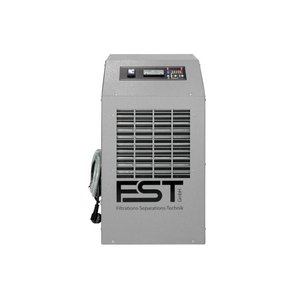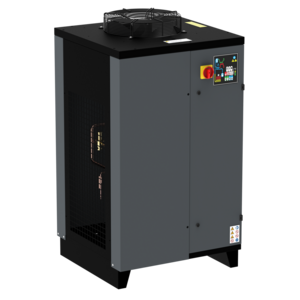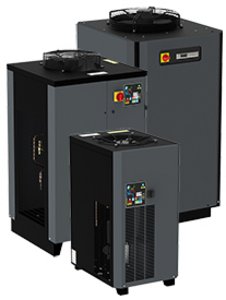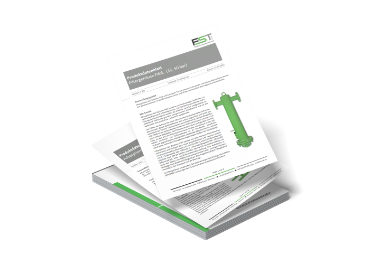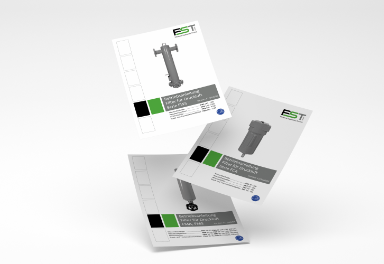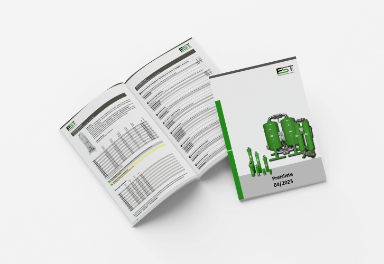Compressed air refrigeration dryers – economical and efficient
Used wherever compressed air needs to be dried economically: Today, refrigeration dryers are the standard for compressed air applications. They are centrally located in compressed air networks. They are cost efficient and achieve a basic degree of drying that is sufficient for most applications.
Our innovative and reliable FST refrigeration dryers DFX, DFLO, and DFLO-ES are suitable for continuous operation, and are available for the most common volume flow ranges. The pressure range of our high-performance products is up to 16 bar. Customers use our compressed air refrigeration dryers for controlling air and blowing air applications, or for compressed air tools, among others.
Do you need higher volume flows, operating pressures, other voltages, larger connections or stainless steel versions? Before you buy a compressed air dryer, our technical support experts will be happy to advise you personally.
Refrigerant drying made easy – six important advantages
Energy efficient

All FST refrigeration dryers work extremely efficiently: Pre-cooling takes place in counterflow to the outgoing, already cooled compressed air. In addition, energy-saving controls and fully integrated, completely thermo-insulated heat exchangers reduce energy costs.
Compact & robust

In most FST fridge dryers, the air-to-air heat exchanger, evaporator and demister condensate separator made of aluminium are combined into a single module. Our dryers also incorporate a robust housing with a long-lasting coating. Their design is extremely compact. In addition to the space saved, this also means that less material is used and we can reduce costs and make a direct contribution to environmental protection.
Versatile & compatible

With a wide range of sizes (29 sizes for the DFLO, and 20 sizes for the DFLO-ES), FST refrigeration dryers can be adapted almost seamlessly to various investment and energy cost requirements. Accordingly, they are compatible with all common connection sizes and compressor outputs.
Low differential pressure

A generously dimensioned air circuit with large flow cross-sections results in low flow velocities. The result: minimal pressure losses and optimum condensate separation.
Comprehensive standard features

Others call it optional extras. We at FST supply all pressure dew point refrigeration dryers with attractive additional functions from the factory. Among other things, our products come with:
- a digital display of the operating status, which shows, among other things, the pressure dew point, ambient temperature and other information
- electronic, level-controlled condensate drains
- a maintenance-friendly design
- a potential-free alarm output for collective fault messages (from DFLO 150).
Eco-friendly

Due to the hermetically sealed refrigerant circuit of all FST refrigeration dryers, no refrigerant can escape. There is no risk to the environment. Furthermore, we use an efficient refrigerant with a comparatively low contribution to the greenhouse effect (so-called GWP value).
Refrigeration dryer – Function & Design
Function
Refrigerated compressed air dryers force premature condensation of the moisture contained in the compressed air by actively cooling the compressed air. This produces condensate, which is collected and discharged. The compressed air is then reheated, and thus brought to a state undersaturated with moisture, i.e. dried.
Thus, pressure dew points of up to +3°C can be achieved with refrigeration drying. Higher drying degrees for individual applications can usually only be achieved with adsorption dryers.
![[Translate to English:] Kältetrockner - Funktion & Aufbau [Translate to English:] Schaubild zeigt Kältetrockner-Funktion & -Aufbau](/fileadmin/_processed_/8/2/csm_kaeltetrockner-funktion-aufbau_fd1b5f8212.jpg)
Design
Each compressed air refrigeration dryer consists of two heat exchangers and a regulated refrigerant circuit.
In the first heat exchanger, the (1) air-to-air heat exchanger, the incoming compressed air is precooled by the cooled, outgoing cold compressed air in counterflow.
The compressed air then enters the second heat exchanger, the (2) refrigerant-air heat exchanger. Here it is cooled down to its lowest temperature by the connected (3) refrigerant circuit.
During the entire cooling process, the moisture contained in the compressed air precipitates as condensate. This is (4) collected centrally and (5) discharged automatically.
Finally, the compressed air is reheated in the (1) air-to-air heat exchanger by warm, incoming compressed air in counterflow. In this way, it reaches an undersaturated state.
Now condensate can no longer form in the refrigeration dryer as long as the compressed air temperature does not fall below the pressure dew point.
Frequently asked questions about refrigeration dryers
News from FST: Our Newsletter
Sign up now and stay up to date. In the FST newsletter we inform you about new products, training courses, events and more.
NEED MORE INFORMATION? TAKE A LOOK!
Contact the best person
Or use our search function to find the right expert for your country. We are happy to help.


